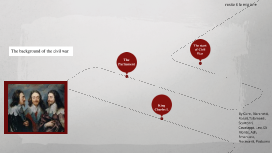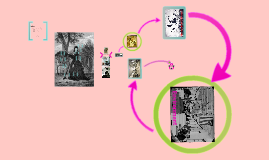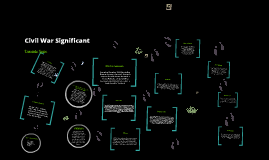Civil War presentation
Transcript: He was Robert E. Lee's most trusted officer, catapulting to the rank of major general in 1861. Thomas Jackson was unfailingly effective as a leader, driving himself as hard as his men. Jackson's nickname, "Stonewall," came from his resolute stature at First Bull Run. after being shot accidentally by his own men--inspired legendary tributes. Bull Run (Manassas), 1st battleJuly 21, 1861Northern VirginiaGen. McDowell leads 30,000 men against Gen. Johnston's 22,000 Southern troops in an attempt to crush the rebels and go "On to Richmond." South scores victory as Union troops flee back to Washington in disarray. McDowell replaced by Gen. McClellan Ambrose Burnside's roller-coaster military career included early Civil War successes, promotion to major general, a bloody draw at Antietam, and selection as general of all Union armies, succeeding his friend George McClellan. But two spectacular failures--the "Burnside mud march" and the "Burnside mine"--led to his first retirement, his return, and final removal from command. Later he served as Rhode Island's governor and U.S. Senator. Clara Barton September-December 1864. GeorgiaGen. Sherman destroys Atlanta and then sends troops on 300 mile destructive march to the sea. Railroads torn up, buildings destroyed, crops burned in an attempt to break the will of the South The West Point graduate and Mexican War veteran replaced Ambrose Burnside after the disastrous Union campaign at Fredericksburg, but Joseph Hooker fell out of favor with his superiors by 1864. Denied promotion from major general to lieutenant general, Hooker then chose to end his participation in the war. Nicknamed "Fighting Joe" for his reputed exploits at Williamsburg, Hooker would remain in the Army, however, until an 1868 stroke forced him to retire. Robert E. Lee Later called "the angel of the battlefield," Clara Barton began attending to wounded Union soldiers after the early losses at Bull Run, and her courage in the face of danger soon became legendary. Recognizing the soldiers’ dire need for medical supplies, Barton began orchestrating donations and distributing necessary medicines and materials. Years later, Clara Barton went on to found the American Red Cross, affiliated with the International Red Cross on April 1861 . location Charleston, South Carolina . Lincoln decides to supply Ft. Sumter, but wants the South to fire the first shot. Bull Run Civil War Significant Dorothea Dix March-July 1862. Location Southern Virginia . McClellan decides to attack Richmond via the South. He moves his large army down the Potomac, marches on Richmond, and then assumes a defensive position ratherthan pushing for victory. Gen. Lee takes command of Southern troops Regarded as the war's finest general, Robert E. Lee was a master of the organization of war. The country's most experienced general in 1861, he declined Lincoln's offer to head the Union Army, even though he opposed slavery. As head of the Confederate Army, Lee projected a deep sense of duty and honor, nicknamed the "Marble Model." President of Washington College after the war, he lost his family home, Arlington, now the nation's largest military cemetery. Eli Whitney Engineer Eli Whitney died 35 years before the Civil War, but his most famous invention, the cotton gin, set the economic stage for war. Whitney's gin made cotton production far more efficient, fueling the need for more Southern slaves and enriching powerful planters. Another Whitney invention--muskets with interchangeable components--inaugurated manufacturing systems for producing uniform parts, without which the U.S. economy might never have produced enough weapons to fight such a lengthy war. Gettysburg Joseph Hooker South Carolina secedes Devante Lowe Antietam September 1862MarylandHeavily outnumbered, Lee's troops face McClellan in bloody fighting. Over 23,000 casualties (more than all previous American wars combined). Lee retreats to Virginia As wartime leader of the Union's Women Nurses, impressing even General Sherman. Her standards were so high that many volunteers were turned away from battlefield postings. A schoolteacher by training, she later became an ardent crusader for reforms in treatment of the mentally ill in prisons, asylums, and elsewhere. Dix's articulate arguments gained her worldwide attention. Antietam on December, 1860 . South Carolina On news of Lincoln's election, Atlanta to Savannah Stonewall Jackson Ambrose Burnside Peninsular Campaign (Yorktown, Seven Days' Battle, Fair Oaks) Ft. Sumter attacked July 1863 ,Pennsylvania . Over 165,000 soldiers participate in the largest battle in the Western Hemisphere. After three days of fighting, Lee retreats, leaving 4,000 dead Confederates. Total casualties: 23,000 Union, 28,000 Confederates

















